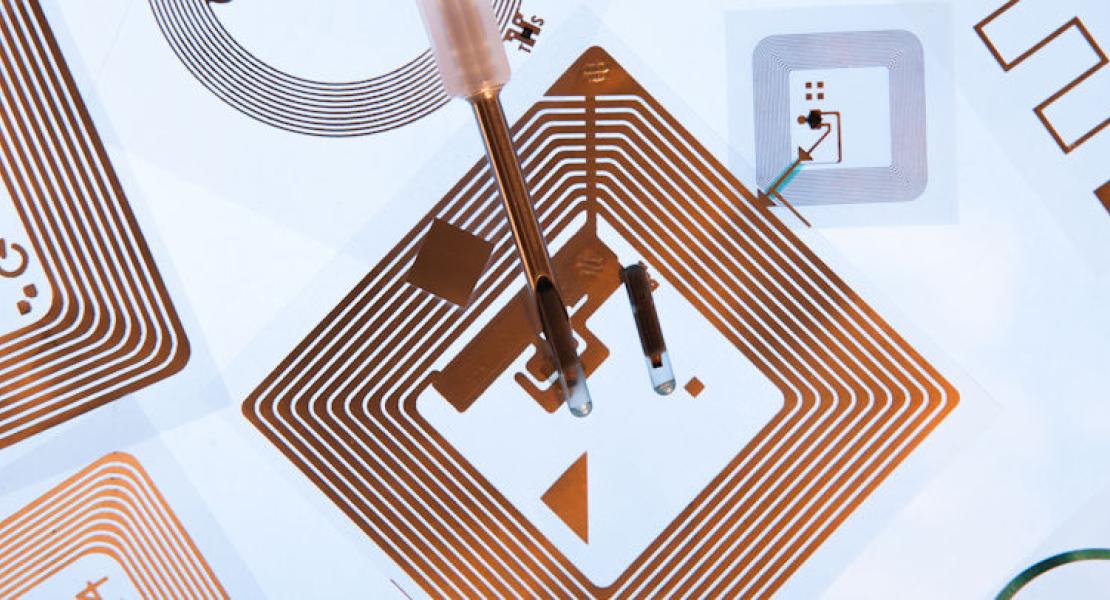Typically, when someone is trying to break down and explain a complicated subject they talk about the ABC’s of that subject. We’re also all about acronyms, so to help you remember the three key pieces of RFID tag development, we’ll dive into the ABC’s of ACE: Antennas, Chips and Environment.

RFID Tag Development
Antennas: the design of the inlay is extremely important in the development of an RFID tag. The antenna is often referred to as the “ears” of the inlay because it is what attracts and catches the RF signal being emitted from the reader. Think of an old television set that had the antenna poking out of the top (yes, I am dating myself here). You moved the antenna around, possibly extending it to get better reception. You may have even added aluminum foil to the ends to improve performance. The same principle applies here.
Inlay designs vary in their performance on different substrates. For example, inlay #1 could perform at 40 ft. on plastic but only 20 ft. on glass, and inlay #2 could perform at 20 ft. on plastic and 40 ft. on glass. This is based on the antenna’s ability to absorb RF energy effectively based upon the material surrounding it. All substrates, except for metal which reflects RF energy, absorb RF to some degree; therefore, the inlay’s ability to absorb more RF than the surface it’s on is critical in identifying the performance/read range of that antenna design.
Chips: the chipset or integrated circuit the RFID inlay uses can have a big difference in the way an RFID tag performs. Simply stated, some chips are more sensitive than others. Chip sensitivity determines how much power is needed to “turn on” the chip and allow the RFID tag to respond. The more sensitive the chip, the less power needed to get a response. For example, one chip may have a read sensitivity of -23dbm while another has a read sensitivity of -22dbm. When measuring read sensitivity, less is better, therefore, the first chip in this example is slightly more sensitive than the second and requires less power to turn on the RFID reader.
Environment: the environment plays a huge role in RFID tag development because of the potential impact it can have on performance by way of interference. In other words, there could be things in the environment that block some of the total amount of RF emitted from the reader, which in turn takes away more chances for the RF signal to reach the antenna with enough power. Environment, even though it’s not part of the actual tag, is figured into every stage of the design of a custom-built RFID solution.
When looking at these three items, there is not one thing that overrides the others in terms as the most important factor in RFID tag development. They must all three work together to achieve the desired performance in the user’s application.
To learn more about our RFID tags, contact us today at [email protected].
 | About the Author: Tyler JohnsonTyler has extensive experience and expertise in the identification industry. Prior to Grey Trunk RFID, he worked at Metalcraft which helped him understand the importance of a high quality identification tag. Now he is leading the team at Grey Trunk RFID to offer the complete solution. |




